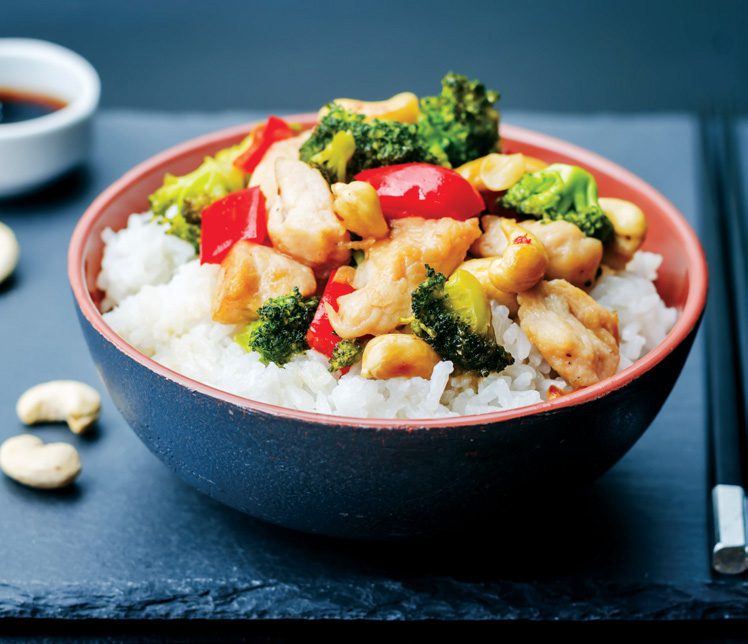Halifax-based dietician and runner Jennie Orr was tasked with creating a complete meal plan for her running club for a destination marathon in California. Here, she shares her plan for the perfectly fuelled race week.
The California International Marathon takes place every year in early December, a perfect opportunity to get the most out of your sweaty summer miles, before the snow and ice in Atlantic Canada sends runners scrambling inside to their trainers and “dreadmills.”
Twelve of us from the Halifax Road Hammers team began the journey to California a few days before the marathon. Nutrition should always be one of the most important components of any marathon, from beginner to elite. Over the course of the trip, nutrition was the most important thing on my mind. While most of my teammates were making lists of running essentials like sneakers, and compression socks, I was dissecting United Airway’s list of foods allowed and not allowed on flights. There were no race week nerves as I had my hands full making grocery store lists, and thinking about a menu to fit the likes, dislikes, and dietary restrictions of 12 hungry runners.
We arrived in California late Thursday evening, and while most were thinking about a nice warm bed, grocery shopping was the priority on my list of things to do. Every day, I would drag a lucky volunteer to the grocery store to help me pick out groceries for a set menu I had organized the week before. I would then get to cutting, washing, chopping and cooking with the help of my teammates.
For each of our meals I focused on making carbohydrates the star, by preparing slightly less veggies and protein at each meal leading up to the race. Carbohydrates are found in grain products like pastas, potatoes and fruit. Carbohydrates are also found in smaller quantities in dairy products like milk and yogurt. If you think of your body as a car you want to put the best possible fuel in your car so you can get to where you are going in the fastest time possible. You wouldn’t put diesel in a gas car, just as you wouldn’t eat a double cheeseburger before going out for a training run. In this case, our best possible fuel isn’t supreme clean, it is carbohydrates. Carbohydrates are the body’s preferred source of fuel for running, as they are used more efficiently, and take less time and energy to break down.
The marathon is a tricky race. It’s long enough to deplete our stores of glycogen in the body (the fancy term for stored carbohydrates). So we need to make sure we take in some carbohydrates on the run, as well as making sure our stores are full and ready to go on race day. We can make sure our stores are full on race day by carbohydrate loading. Carbohydrate loading three to four days out before a goal marathon is a great way to enhance performance, but mindlessly eating spaghetti every night for a week isn’t going to get you that big PB either.
How to eat to race your best marathon
1 Begin carb-loading 3–4 days out from your marathon.
2 Increase your servings of carbohydrates by 3–6 extra servings a day.
3 Calculate your carbohydrate needs. Aim for 9–12 g of carbohydrates, per kilogram of body weight, per day.
4 Be mindful of fibre, yes the dreaded F word, unless you want to be well acquainted with the inside of a race porta-potty, make half of your carbohydraterich food choices lower in fibre. For example, eat white rice or white potatoes to prevent any race day emergencies.
5 Increase your water intake, there is no set amount. Think instead: pale pee equals PB (and dark pee equals the medical tent). Remember: being over-hydrated (clear pee) can also be problematic come race day.
6 Eat fewer veggies. Yes, you heard that right, you get a free pass to forget your leafy greens for a few days only leading up to race day, to help decrease fibre in the diet and make more room for carbohydrates. Now, this is not saying you shouldn’t eat any veggies, you should still have a few servings each day. After the marathon veggies should go back to making up half your plate.
7 Decrease protein intake slightly to three-quarters of your usual intake to allow for the diet to be richer in carbohydrates.
8 Consume foods like crackers, pretzels and fruits for snacks instead of nuts and cheese, as the latter are higher in fat, which will take up precious room in your stomach for our favourite food group: carbohydrates.

An example of one of our pre-race dinners for 12 runners:
Chicken Stir-Fry
Ingredients
18 cups basmati rice, cooked (or 4 ½ cups rice, uncooked)
8 boneless skinless chicken breasts
8 carrots
8 stalks of celery
2 onions
3 peppers
3 apples
Directions
1 Chop all veggies and chicken into bite sized pieces.
2 In a medium frying pan over medium heat use 2 tbsp of olive oil to sauté celery, onions, carrots and peppers.
3 Cook rice according to package instructions.
4 In another pan over medium heat cook chicken with 2 tbsp of oil.
5 When chicken and veggies are cooked add rice in a large frying pan and mix, then serve.
Jennie Orr is a dietician and marathon runner living in Halifax.

